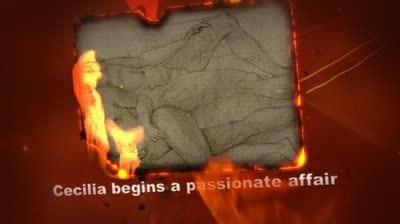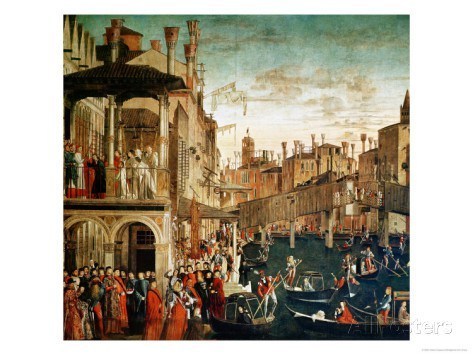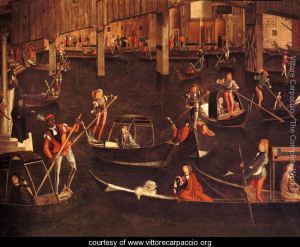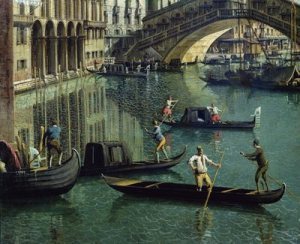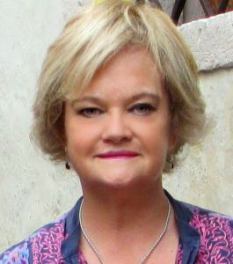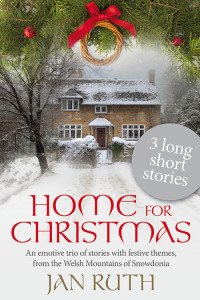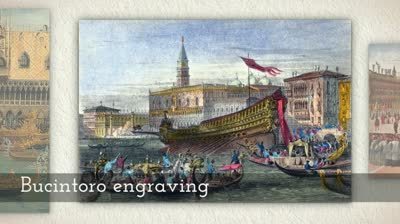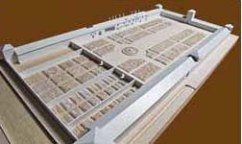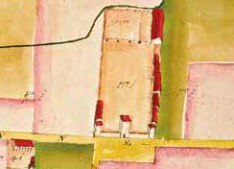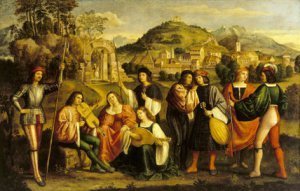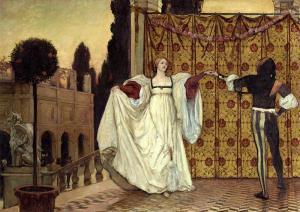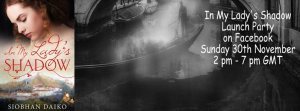Siobhan Daiko's Blog, page 14
January 10, 2015
Stanley Civilian Internment Camp
As I prepare “The Orchid Tree” for publication, here’s a post I wrote about the setting of the start of the novel. My grandparents were interned in the camp, and went through some of the harrowing experiences of my characters.
 Originally posted on Siobhan Daiko's blog about her writing and life of romance and adventure in Hong Kong and Italy:
Originally posted on Siobhan Daiko's blog about her writing and life of romance and adventure in Hong Kong and Italy:
My heroine, Kate, falls in love with Charles when she is fifteen and has been interned with her parents by the Japanese in the Stanley Internment Camp. About 2,800 men, women, and children were held at the non-segregated camp for 44 months from early January 1942 to August 1945 when Japanese forces surrendered. My own grandparents were interned in the same camp.
On 8 December 1941, Japanese forces attacked Hong Kong, marking the start of the Battle of Hong Kong. Seventeen days later, on Christmas Day of 1941, which came to be known as “Black Christmas”, the Hong Kong government surrendered, and Hong Kong came under Japanese occupation.
The Stanley site was chosen by the Japanese through consultation with two Hong Kong government officials, the Director of Medical Services, and the Colonial Secretary. Located on Stanley Peninsula, which was about nine kilometres from the city at the time, the camp consisted of St. Stephen’s College…
View original 139 more words

December 30, 2014
Happy New Year!
It’s a cold New Year’s Eve here in our little corner of Italy and we’ll celebrate it in the usual way with plenty of Prosecco and by watching the fireworks. I’d like to wish you all a wonderful 2015, filled with every happinness.
The WordPress.com stats helper monkeys have prepared a 2014 annual report for my blog. It seems my most popular posts were written before the year about to end, probably because readers were searching for information on those topics. I would like to thank Teagan, Mary and Renita for their contributions and for being such faithful readers.
Here’s an excerpt:
A New York City subway train holds 1,200 people. This blog was viewed about 6,000 times in 2014. If it were a NYC subway train, it would take about 5 trips to carry that many people.
Click here to see the complete report.

December 17, 2014
Merry Christmas From AWW – Free eBook Lucky Dip Giveaway!
Fancy a lucky dip for Christmas?
 Originally posted on A Woman's Wisdom:
Originally posted on A Woman's Wisdom:
A Woman’s Wisdom is almost two years old and it’s nearly Christmas so what better way to celebrate these two momentous events than offering my fabulous blog readers a free book in a Lucky Dip?
Lots of lovely authors have offered to give a copy of a free ebook and you can click on their names below to find out more about them and see their websites and links via AWW interviews or articles -
Cynthia Harrison, Katie Oliver, Mark Barry (aka Wiz Green), Terry Tyler, Shen Hart, Georgia Rose, Kathy Bryson, Jane Dougherty, Siobhan Daiko, Jan Ruth, Helen Christmas, E L Lindley, Noelle Granger, Amanda Egan, Jenny Worstall, Anita DawesandJaye Marie.
One copy of every title below is available and there are even a couple of signed paperbacks in there from
View original 140 more words

December 15, 2014
Venice Past and Present (Part 1)
When I was researching the background of In My Lady’s Shadow, I found out about the existence of an old painting, showing the Rialto Bridge in Venice at the time of my novel.
The miracle of the relic of the cross at the Ponte di Rialto, dating from c. 1496 by Vittore Carpaccio shows the miracle of the healing of a man with a mental illness through the relic of the Holy Cross, which took place in the Palazzo of San Silvestro on the Grand Canal, near the Rialto Bridge.
I love the inverted cone chimney-pots of medieval Venice. The bridge is still in wood here, as it was before it collapsed in 1524. Like the current version (dating from 1591) it had a double row of shops at the sides and, at the top, a movable boardwalk needed to allow the passage of the taller vessels.
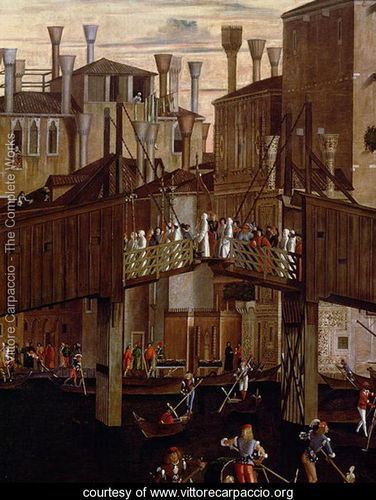 On the right is the 15th century appearance of the Fondaco dei Tedeschi, destroyed by a fire in January 1505. Other architectural features include the bell tower of San Giovanni Grisostomo, the portico of Ca’ da Mosto and the bell tower of Santi Apostoli before its reconstruction in 1672. Caterina Cornaro, the lady of In My Lady’s Shadow, is buried there.
On the right is the 15th century appearance of the Fondaco dei Tedeschi, destroyed by a fire in January 1505. Other architectural features include the bell tower of San Giovanni Grisostomo, the portico of Ca’ da Mosto and the bell tower of Santi Apostoli before its reconstruction in 1672. Caterina Cornaro, the lady of In My Lady’s Shadow, is buried there.
There are wonderful human details, such as the private gondolas used as ferries
the presence of numerous foreigners with eastern style garments, women clearing carpets, and workers who are clearing their barrels. A slice of life more than 500 years ago.
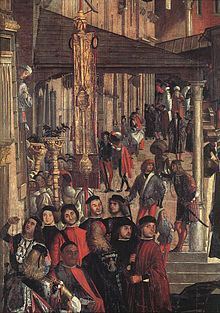 The Ca’ da Mosto is still there today. The features of the palace show its beginnings as a casa-fondaco, the home and workplace of its original merchant owner. A second floor was added at the beginning of the sixteenth century, and a third in the nineteenth. The palace takes its name from the Venetian explorer Alvise da Ca’ da Mosto, who was born in the palace in 1432.
The Ca’ da Mosto is still there today. The features of the palace show its beginnings as a casa-fondaco, the home and workplace of its original merchant owner. A second floor was added at the beginning of the sixteenth century, and a third in the nineteenth. The palace takes its name from the Venetian explorer Alvise da Ca’ da Mosto, who was born in the palace in 1432.
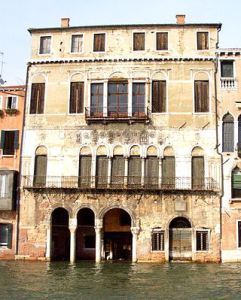 The present stone bridge, a single span designed by Antonio da Ponte, was finally completed in 1591 and looks quite similar to the wooden bridge it replaced.
The present stone bridge, a single span designed by Antonio da Ponte, was finally completed in 1591 and looks quite similar to the wooden bridge it replaced.
Two inclined ramps lead up to a central portico. On either side of the portico, the covered ramps carry rows of shops. We were there a week ago with our visitors, soaking up the atmosphere of this beautiful city.

December 12, 2014
New Release/Book Promo – In My Lady’s Shadow by Siobhan Daiko
I’m over on book blogger Bodicia’s site today. Do drop by!
 Originally posted on A Woman's Wisdom:
Originally posted on A Woman's Wisdom:
Siobhan Daiko was born in Hong Kong and now lives near Asolo in the Veneto, Northern Italy, with her husband and two cats. Her home is in a converted artist’s studio next to an old farmhouse, where, at night, she can sometimes hear the sound of a lute playing centuries-old tunes. There is an old church at the bottom of the hill, which dates from the 12th Century. The cats will not go down there: they find it too spooky.
Siobhan blogs about writing and her life of romance and adventure in Hong Kong and Italy. She would love you to visit In My Lady’s Shadow’s Facebook page and you can find her on her website andTwitter.
In My Lady’s Shadow is Siobhan’s first novel to be published. She has written another, which is pending publication, set in Hong Kong during World War II and the post-war…
View original 2,154 more words

December 8, 2014
Monday Interview with Jan Ruth
Today I’m so happy to welcome Jan Ruth to Douglas Bland Artists’s studio in Italy. Jan and I got to know each other online a couple of months ago when we found out we shared the same editor, John Hudspith. We have a passion for the Welsh countryside in common, too, as well as a love of horses (and a certain mad obsessiveness about our writing).
 I couldn’t wait to read Jan’s work and, when I did, I wasn’t disappointed. Here’s the review I wrote for her novel Midnight Sky.
I couldn’t wait to read Jan’s work and, when I did, I wasn’t disappointed. Here’s the review I wrote for her novel Midnight Sky.
“When I read the blurb for “Midnight Sky” and saw that the hero is a horse-whisperer, I just had to read it. The first word that springs to mind now I’ve finished it is, “Wow!” I absolutely loved it. Fell in love with James Morgan-Jones and really wanted him and Laura to get together. Won’t give any spoilers, though. For me, the best thing about losing myself in a romance is the ‘Will he? Won’t she?’ element, which Jan Ruth exploits beautifully. There’s a whole host of realistic characters in this novel, all of them interesting, and the story line is so compelling I couldn’t stop reading. I used to live in Wales, and it was great to be transported back there. I’m delighted to have found this author and will definitely be reading more of her books.”
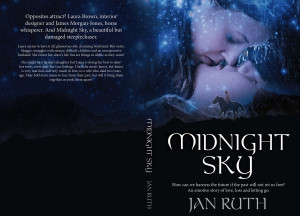 So glad you can join me in an aperitivo, my lovely. What can I offer you?
So glad you can join me in an aperitivo, my lovely. What can I offer you?
I was wondering when you’d ask! I’m a plain Jane when it comes to drinkies so it’s a straight Sauvignon for me, or a cheeky Chardonnay. None of those watered-down spritzers! (I can force down gin and tonic too, although I always think of this as a long summer drink).
Ooh, let’s have some Chardonnay. (Pours two glasses). Cheers!

You’ve recently published Home for Christmas, an emotive trio of stories with festive themes from the Welsh Mountains of Snowdonia.
Please tell us all about what looks like a fab read!
It was great fun to write, despite me starting these in July with the sun beating down. The brief to myself was 3 very different stories. I think they turned out pretty well. Here’s a short description:
Rudolph the Brown-Nosed Reindeer
Rick isn’t looking forward to his lonely corporate Christmas, but it’s the season of goodwill and magic is in the air. An off-beat love story. It’s time Rick wore his heart on his sleeve, or is it too late? Lessons in love from an unlikely source.
Jim’s Christmas Carol
Santa and Satan pay a visit. One brings presents, the other an unwelcome presence. Paranormal reality. Jim’s played with fire it’s time he got his comeuppance, but from who?
Home for Christmas
Deck the halls with boughs of holly. Fa la-la la-la, la-la la-la. Tis the Season to be jolly… Romantic-comedy. Pip might accidentally find her true vocation, but the folly of her fibs are about to catch up with her.
I’m looking forward to snuggling up by the fire with your lovely stories, a glass of mulled wine, and some mince pies (which I’ll have to make myself as we can’t buy them in Italy). Jan, you must be one of the most prolific authors I’ve chatted with here.
Please can you tell us about the inspiration behind your books, what keeps you writing, and something about your path to publication. Before you start, let me top up your glass and offer you a slice of pizza.
Thanks! I think inspiration comes from having something to say, a need to share an experience; and then of course for me, the Welsh landscape plays a huge part in my musings. When we moved here some 17 years ago, it kick-started my writing. You could say it was dormant, in a musty box under the bed. Inside the box was a book I’d written called Summer in October. I even managed to ensnare an agent with it but she couldn’t get financial backing for her new business and it all fell apart. Next came Wild Water and I was lucky again to be agented, this time to Jane Judd, but to cut a long story short – it came to nothing, since my style was – and still is – very much between genre. Now of course, all of these restrictions have been blown wide open with the advent of self-publishing and over the last 17 years I’ve written 5 novels and 3 sets of short stories; not as prolific as some, but there was a long 10 year gap where I did none. Also, I only write when I’m inspired to do so. Summer in October was re-written and became Midnight Sky. I only started self-publishing my titles 4 years ago but I guess I’ve only really got to grips with my brand and who I am over the previous 2 years. It’s been a steep learning curve but I can’t say I’ve enjoyed every step of the way… in fact, I was on the point of stopping altogether when I met John Hudspith and Jane Dixon-Smith. Editing and cover design is so important and a totally different skill to writing, but the books finally got the professional boost they needed. This isn’t to say I’m entirely happy being self published, there is much I don’t like about the process and although I am grateful to have had the opportunity via kindle, I am also pleased to say that Silver Rain is now signed to Accent Press and will be re-published next spring.
Fascinating! And congratulations on your publishing contract! Briefly, can you describe your writing process? I mean, are you a plotter or do you write by the seat of your pants? Is there a daily word-count that you aim for when you are writing? Do you revise as you go along, or do you plough on with a first draft then go back and self-edit?
Oh, I never plan anything. I have a well formed idea in terms of plot, but after that I rely on character and circumstance. I think over-planning takes all the spontaneity out of the process and if its dull for the writer, its more often than not, dull for the reader. Having said that, I do cut and paste scenes here there and everywhere to make something work. Also, as one becomes more experienced I do think instinct kicks in. I’ve brought in characters and small scenes with no sense of purpose at the time, but then when it all clicks together towards chapter 15… I love that feeling! It’s like my muse is saying ‘I told you so. There was a reason the man with the wooden leg popped up in chapter 3.
Ha! That’s Interesting, and I think you’re spot-on about spontaneity. We can’t sit here chatting without mentioning our inspiring editor, John Hudspith. You’ve coined a new word, “Johnnyometer”. Love it! Please explain to my readers what that means.
For me, it means he reads the final manuscript and gives it a thorough proofread and a line edit. He’s also checking that I haven’t got the guy with the wooden leg running for a bus in chapter 4. When I first started writing novel-length books I endured dozens of re-writes; but the discipline of that was necessary to learn and understand the craft of how to structure a novel, build character, show not tell. I’ve got a good handle on the basics now but no matter how experienced you think you may be, another pair of experienced eyes is vital. This is where the Johnnyometer comes in.
Fab! We have a love of horses in common and I’m green with envy when I see the wonderful pics you post on Facebook of some of your rides.
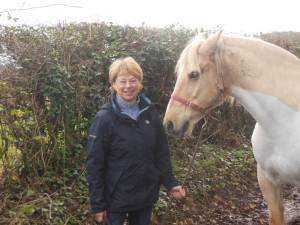 Wales is such a beautiful part of the UK and you’ve said it has influenced your work hugely. Many of my followers won’t know much about Cymru and I hope they will pick up your novels to get a flavour of God’s own country. In a few sentences, can you tell us about Snowdonia and how it inspires your writing?
Wales is such a beautiful part of the UK and you’ve said it has influenced your work hugely. Many of my followers won’t know much about Cymru and I hope they will pick up your novels to get a flavour of God’s own country. In a few sentences, can you tell us about Snowdonia and how it inspires your writing?
Snowdonia is rugged, mountainous and as beautiful as it is dangerous. I love the hills and the constant change of season here, it never fails to inspire. There’s a rich sense of history too, with castles, druids circles and standing stones; derelict farmsteads, slate mines and of course, the sea. I use the landscape almost as a character in its own right. I use it to set mood too. I never noticed this until an editor at Cornerstones Literary Agency told me I needed to expand on that. With regard to the horses, I’ve been around them all my life so its natural they should feature, plus I’m lucky to have the wild Carneddau ponies on my mountain doorstep. (Some stunning images of the ponies and a feature about them on my blog).
Great! I’ll provide a link to your blog at the end of our chat. What’s on the cards next in your writing career?
I’m thinking about a sequel for Midnight Sky, which is tentatively titled Palomino Sky.
Wonderful! I loved that story and will definitely read the sequel. Oh, I can see your glass is empty. Let me refill it. More pizza?
Yes, and yes please. Thank you for having me!
I wish you every success in achieving your dreams, my lovely. It’s been great chatting with you and sharing an aperitivo. Thanks again for joining me. Before you go, please can you leave readers with three facts that might surprise them about you?
I’m not Welsh. I do my best writing in a pair of horrible pyjamas. I’m still a tomboy at age 57. (Actually, I doubt anyone is terribly surprised by that .)
(Laughs) Readers, if you would like to know more about Jan and her books, you can visit her website http://janruth.com/ follow her on Twitter @JanRuthAuthor and connect with her on Facebook.
December 5, 2014
Saint Mark’s Skyline – Venice
I’m re-blogging these wonderful pictures of Venice. Enjoy!
 Originally posted on Shooting Venice and more:
Originally posted on Shooting Venice and more:

Venice Skyline
Yesterday I was at San Giorgio Maggiore’s island to take some last photos of the exhibition “The Sky Over Nine Columns” by Heinz Mack, before the structure will leave Venice, that should happen in a couple of days. The sun set down, leaving the sky half bright, half dark, as the first lights of the city were lighted up creating a terrific atmosphere for a skyline shot of St. Mark’s Square with its Campanile and Doge’s Palace.
The photographer within the frame is one of the participants to the enticing workshop held by Rohan Reilly (definitely worthy to check his website).
Location: San Giorgio Maggiore, Venice.
What to shot: San Giorgio Maggiore has a small harbor, a renaissance church, a Benedictine monastery, but it also offers a good view of St. Mark’s Square and the lagoon across.
Ideal time to shot: I prefer to be at San Giorgio at sunset, when the light…
View original 35 more words

December 4, 2014
Venice in the 16th Century
November 29, 2014
Caterina Cornaro’s “Barco”
“in My Lady’s Shadow” will be released tomorrow. Here is a blog I wrote after researching the Sovereign Lady of Asolo’s villa of delights, where parts of the story are set.
 Originally posted on Siobhan Daiko's blog about her writing and life of romance and adventure in Hong Kong and Italy:
Originally posted on Siobhan Daiko's blog about her writing and life of romance and adventure in Hong Kong and Italy:
What I love about the setting of my novel, In My Lady’s Shadow, is that I could visit my locations and dream about what they would have been like half a millennium ago. IMLS is partly set in Caterina Cornaro’s country estate, which was said, at the start of the Sixteenth Century, to be a place worthy of a King of France.
There were originally three enclosed spaces within an area of about 112 acres. The outer space was reserved for hunting and was filled with wildlife.
A model in the Giorgione Museum, Castelfranco, shows the living quarters and gardens before 1509. All that remains today is part of the east wing.
Here is a painting of what was left of the estate in the 18th Century.
The whole complex, a cross between a castle and a Venetian villa, was a palace of relaxation and delights where Caterina Cornaro…
View original 127 more words

November 24, 2014
In My Lady’s Shadow to be released on 30th November
When we moved to Italy two years ago, I decided to write a novel with Caterina Cornaro as one of the characters. She was a Venetian noble woman who was married to the King of Cyprus and became the Sovereign Lady of Asolo in 1489 after the Most Serene Republic, la Serenissima, took control of the island.
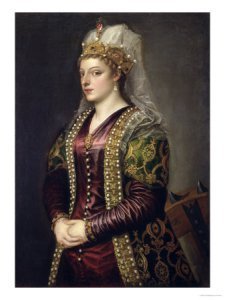 She died in Venice on 10 July 1510, a year after the Barco, her villa of delights, was damaged by a fire set by the League of Cambrai troops. It was there that she had established a court of literary and artistic distinction and where Pietro Bembo set his platonic dialogues on love, Gli Asolani.
She died in Venice on 10 July 1510, a year after the Barco, her villa of delights, was damaged by a fire set by the League of Cambrai troops. It was there that she had established a court of literary and artistic distinction and where Pietro Bembo set his platonic dialogues on love, Gli Asolani.
I became fascinated by this court and soon got stuck into reading about courtly love and life.
After visiting the ruins of the Barco (see my blog post), I decided to use the element of fire as the link between Fern, the 1989 heroine of the novel, and Cecilia, my 16th Century protagonist. The more I wrote about Cecilia, the more she came to life. Although she lives in the shadow of the Queen, she is by no means overshadowed by her.
I started the early chapters about 18 months ago, then my mother fell ill and I spent most of my time looking after her. Mum passed away, and I was too grief-stricken to write for a while. My first novel, The Orchid Tree, needed more work, so I got in touch with John Hudspith and, after his inspiring editing, I sent it to a publisher. Six months later it’s still “under consideration”. During those six months, however, I went back to In My Lady’s Shadow and now I have completed it. A supernatural time-slip historical romance, the only thing it has in common with my first book is the “historical” label and what Johnny calls my “fragrant” writing voice. He has paid me a huge compliment, and now I’ve set up Fragrant Publishing to market my “Fragrant Books”.
What I love about working with Johnny is that he goes the extra mile. He doesn’t just tell you where he thinks your manuscript can be improved, he re-edits your re-writes until both he and you are satisfied. The great thing about working with him is that he knows everything there is to know about story structure and the all-important need for your reader to invest in the “what-if?” of your novel.
My “baby” will come out into the big wide world this coming Sunday 30th November. It’s available for pre-order on Amazon. I’d be absolutely delighted if you’d all come to my Facebook Launch Party.
See you there!

